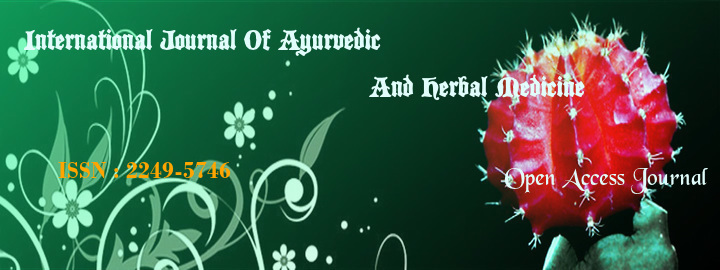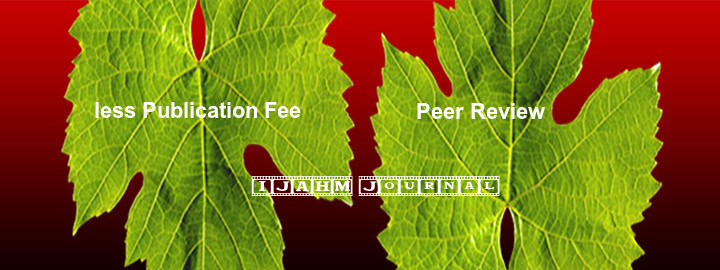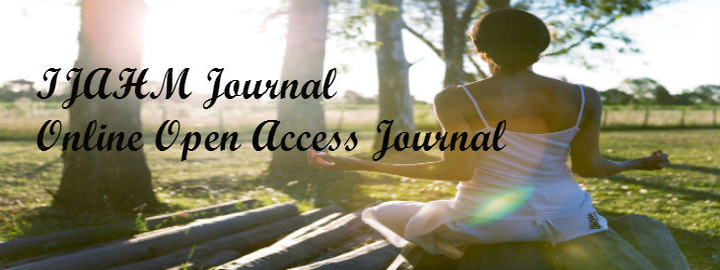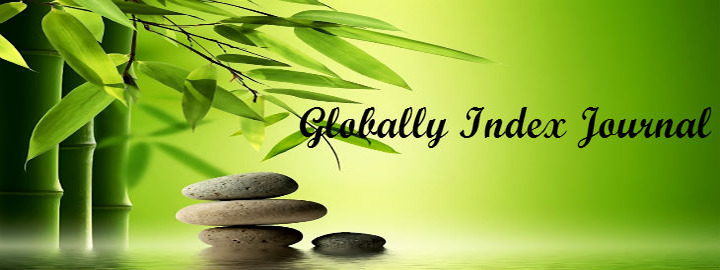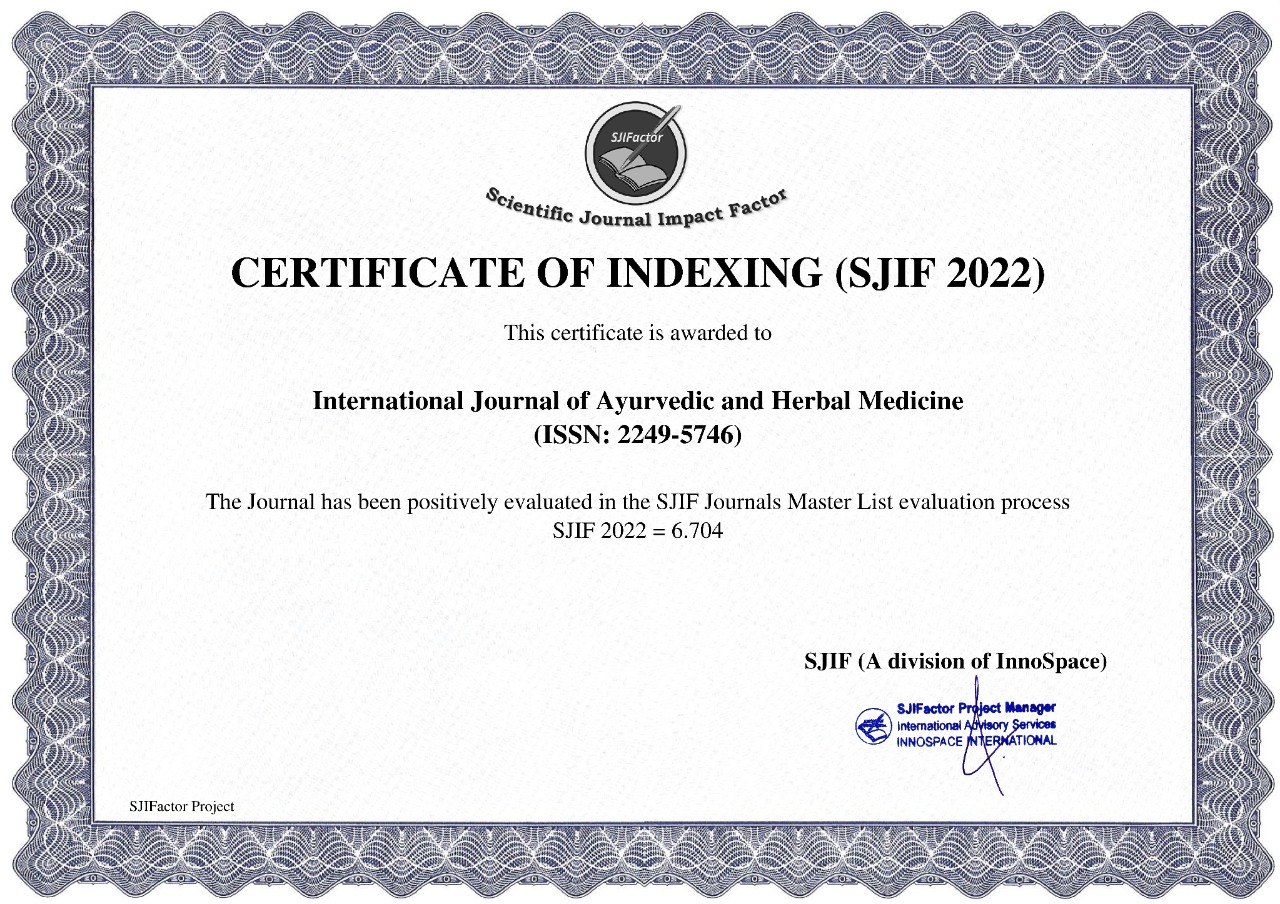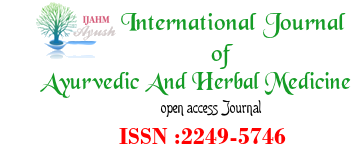


Abiha Ahmad khan,1* Wajeeha Begum,2 Mariyam Roqaiya,1 Sana Fatima Majeedi1
1PG Scholar Dept. of Ilmul Qabalat wa Amraze Niswan, NIUM, Bengaluru.
2Reader and Hod, Dept. of Ilmul Qabalat wa Amraze Niswan, NIUM, Bangalore.
*Corresponding Author;
*Abiha Ahmad Khan
Pg scholar OBG Department.
Email: This email address is being protected from spambots. You need JavaScript enabled to view it.
Abstract
Breast cancer is an increasing public health problem. In India breast cancer is the 2nd most common cancer after cancer cervix. Obesity and a sedentary lifestyle are two modifiable risk factors. Advances have been made in the treatment of breast cancer, but the introduction of methods to predict women at elevated risk and prevent the disease has been less successful. Plants have a long history of use in the treatment of cancer. In the recent years, a number of herbs have been found to possess anti-cancer potential. In the Unani system of medicine, breast cancer is described as warme sulabe pistan or sartane pistan. Unani physicians have mentioned in the texts that the warme sulab usually develops in the az’ae ratba. Various herbal formulations in Unani system of medicine have been used for the prevention. A number of herbal drugs such as rehan, mulaithi, methi, alsi etc are being researched and reviewed for their anti-cancerous properties. This review expands the concept of warme sulabe pistan in Unani system of medicine and anticancer effects and related mechanisms of some common natural herbs in the prevention of breast cancer. Details will be presented in full length paper along with scientific research.
REFERANCES
1. Singh MM, Devi R, Walia I, Kumar R. Breast self examination for early detection of breast cancer. Indian J Med Sci 1999;53:120-6.
2. Anderson BO et al. (2008). Guideline implementation for breast healthcare in low-income and middle-income countries: overview of the Breast Health Global Initiative Global Summit 2007. Cancer, 113, 2221–43.
3. Smigal C, Jemal A, Ward E, etal. Trends in breast cancer by race and ethnicity: update 2006. CA Cancer J Clin 2006;56:168–183.
4. American Cancer Society. Breast Cancer Facts and Figures 2005–2006. Atlanta, GA: American Cancer Society; 2005.
5. Tabri AHBM. Al-moalijaate Buqraatiya. Part II, 1997. P 245
6. Kumar P, Malhotra N. Jeffcoate’s principles of gynecology. Jaypee brothers medical publishers; 2008. P.188.
7. Shahid U. Herbal Treatment Strategies for Breast Cancer. OMICS group of ebooks.
8. Martin C.Mahoney, Eleni Linos, Walter C, Willett. Opportunities and Strategies for Breast Cancer Prevention Through Risk Reduction. CA Cancer J Clin 2008;58:347–371
9. Sakarkar DM, Deshmukh VN. Ethnopharmacological Review of Traditional Medicinal Plants for Anticancer Activity. International Journal of PharmTech Research 3: 2011. 298-308.
10. Smith RA, Saslow D, Sawyer KA, Burke W, Costanza ME, Evans WP et al. American Cancer Society Guidelines for Breast Cancer Screening: Update 2003. CA Cancer J Clin 2003;53:141-169
11. Walter LC, Covinsky KE. Cancer screening in elderly patients: A framework for individualized decision making. JAMA 2001;285:2750-2756.
12. Walter LC, Brand RJ, Counsell SR. et al. Development and validation of a prognostic index for 1-year mortality in older adults after hospitalization. JAMA 2001;285:2987-2994.
13. Eccles SA, Aboagye EO, Ali S, Anderson AS, Armes JO, Berdetchevski F, Blaydes JP et al. Critical research gaps and translational priorities for the successful prevention and treatment of breast cancer. Breast Cancer Research 2013, 15:R92. http://breast-cancer-research.com/content/15/5/R92.
14. Prentice RL, Caan B, Chlebowski RT, Patterson R, Kuller LH, Ockeene JK et al. Low fat dietary pattern and risk of invasive breast cancer: the woman’s health initiative randomized controlled dietary modification trial. JAMA 2006, 295: 629-642.
15. Fontein DB, De glas NA, Duijm M, Bastiamnet E, Portielje JE, Van de velde CJ. Age and the effect of physical activity on breast cancer survival: a systematic review. Cancer Treat Rev2013; 39:958-965.
16. Gullet NP, Rahul amin ARM, Bayraktar S, Pezzuto JM, Shin DM, Khuri FR et al. Cancer prevention with natural compounds. Seminars in Oncology. Vol 37. No 3. June 2010. pp 258-281
17. Ibne sina. Al-Qanoon. Jamia Hamdard. New Delhi, 1993.
18. Kitaabul umdah fil jarahat. Part I. Chapter 8. P. 169-170.
19. Kitaabul mukhtarat fit tib. P. 183
20. Ibne Sina AS. Al-Qanoon Fil-Tibb. Book I. Jamia Hamdard. New Delhi, 1993.
21. Kitaabul mukhtarat fittib. Part IV. P. 294.
22. Tabri AHBM. Al-moalijaate Buqraatiya. Part II, 1997. P. 245.
23. Ibne Sina. Al-qanoon. P. 1278-1279
24. Kitabul mukhtarat fittab. Part IV. P. 183.
25. Kitabul mukhtarat fittib. Part I.P. 294.
26. Al razi. HBZ. Kitabul hawi. P.16-27.
27. Qabeeruddin M. part II. Al-Akseer. P.1338-1339.
28. Ponnachan PT, Paulose CS, Panikkar KR. Effect of leaf extract of Aegle marmelose in diabetic rats. Indian journal of experimental biology.1993;31:345-347.
29. Subramanian S. Hypoglycemic effect of Aloe vera gel on streptozotocin-induced diabetes in experimental rats. Journal of Medicinal food.2004;7:61-66.
30. Gastric antiulcer effects of the leaves of the neem tree. Planta Medica. 1993; 59:215-7.
31. Umadevi M, Sampath KP, Bhowmik D, Duraive S. Traditionally Used Anticancer Herbs In India. Journal of Medicinal Plants Studies Year: 2013, Volume: 1, Issue: 3 First page: (56) Last page: (74) ISSN: 2320-3862.
32. Sairam K, Rao CV, Babu MD, Kumar VK, Goel RK. Antiulcerogenic effect of ethanolic extract of Emblica officinalis: an experimental study. J Ethnopharmacol. 2002;82:1-9.
33. Mahendran P, Vanisree AJ. The antiulcer activity of Gacinia cambogia extract against indomethacin induced gastric ulcer in rats. Phytotherapy research. 2002;16:80-83.
34. Lakshmi S, Padmaja G, Remani P. Antitumour Effects of Isocurcumenol Isolated from Curcuma zedoaria Rhizomes on Human and Murine Cancer Cells. International Journal of Medicinal Chemistry. 2011, 13.
35. Nadkarni AK. The Indian material medica. 1982. P 582
36. Shahid U. Herbal Treatment Strategies for Breast Cancer. October, 2013. www.esciencecentral.org/ebooks.
37. Winston JC. Health-promoting properties of common herbs. Am J Clin Nutr vol. ; 1999.70: 491-499.
38. Ji HD, Yasumasa I, Takaomi I, Hiroshi T, Hirotake K, et al. Glycyrrhizin enhances interleukin-12 production in peritoneal macrophages. Immunology 103; 2001. 235–243.
39. Itoh K, Kumagai K. Augmentation of NK activity by several anti-inflammatory agents. Excerpta Med 641; 1983. 460–464.
40. Chik W, Dalila W, Azura A, Parveen J. Purification and Cytotoxicity Assay of Tomato (Lycopersicum esculentum) Leaves Methanol Extract as Potential Anticancer Agent. Journal of Applied Sciences; 2010. 10. 32833288.
41. Son YO, Kim J, Lim JC, Chung Y, Chung GH, Lee JC. Ripe fruits of Solanum nigrum L. inhibit cell growth and induces apoptosis in MCF-7 cells. Food Chem Toxicol; 2003. 41. 1421–1428.
42. Rickard SE, Yuan YV, Thompson LU. Plasma insulin-like growth factor I levels in rats are reduced by dietary supplementation of flaxseed or its lignan secoisolariciresinol diglycoside. Cancer Lett 161; 2000. 47–55.
43. Zhang LY, Wang XL, Sun DX, et al. Regulation of zinc transporters by dietary flaxseed lignan in human breast cancer xenografts. Mol Biol Rep 35; 2008. 595–600.
44. Bergman Jungestrom M, Thompson LU, Dabrosin C. Flaxseed and its lignans inhibit estradiol-induced growth, angiogenesis, and secretion of vascular endothelial growth factor in human breast cancer xenografts in vivo. Clin Cancer Res 13; 2007. 1061–1067.
45. Winston JC.Health-promoting properties of common herbs. Am J Clin Nutr vol. 70; 1999. 491-499.
46. Sakarkar DM, Deshmukh VN. Ethnopharmacological Review of Traditional Medicinal Plants for Anticancer Activity. International Journal of PharmTech Research 3; 2011 298-308.
47. Belman S. Onion and garlic oils inhibit tumor promotion. Carcinogenesis 4; 1983 1063-1065.
48. Milner JA. Garlic: its anticarcinogenic and antitumorigenic properties. Nutr Rev 54: 1996. S82-86.
49. Nagabhushan M, Bhide SV. Curcumin as an inhibitor of cancer. J Am Coll Nutr 11; 1992. 192-198.
50. Winston JC. Health-promoting properties of common herbs. Am J Clin Nutr vol. 70; 1999. 491-499.
51. Sakarkar DM, Deshmukh VN. Ethnopharmacological Review of Traditional Medicinal Plants for Anticancer Activity. International Journal of PharmTech Research 3; 2011. 298-308.
52. Agarwal BB, Kumar A, Bharti AC. Anticancer potential of curcumin: preclinical and clinical studies. Anticancer Res 23; 2003. 363-398.
53. Awale S, Lu J, Kalauni SK, Kurashima Y, Tezuka Y, et al. Identification of arctigenin as an antitumor agent having the ability to eliminate the tolerance of cancer cells to nutrient starvation. Cancer Res 66; 2006 1751-1757.
54. Gerlach SL, Rathinakumar R, Chakravarty G, Göransson U, Wimley WC, Darwin SP, Mondal D. Anticancer and chemosensitizing abilities of cycloviolacin 02 from Viola odorata and psyle cyclotides from Psychotria leptothyrsa, Biopolymers; 2010. 94. 617-25.
55. Kholoud K Khoja, Gowhar Shafi, Tarique N Hasan, Naveed Ahmed Syed, Abdrohman S Al-Khalifa, Abdullah H Al-Assaf, et al. Fenugreek, a Naturally Occurring Edible Spice, Kills MCF-7 Human Breast Cancer Cells via an Apoptotic Pathway. Asian pacific journal of cancer prevention. Volume 12; 2011.
56. Alkaabi AAA, Al-Falasi SA, Daoud S. Chemopreventive activities of Trigonella foenum graecum (Fenugreek) against breast cancer. Elsevier. Volume 29. Issue 8; 2005.
57. Kuo PL, Hsu YL, Cho CY. Plumbagin induces G2-M arrest and autophagy by inhibiting the AKT/mammalian target of rapamycin pathway in breast cancer cells. Mol Cancer Ther; 2006. 5(12). 3209
index







